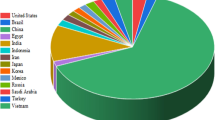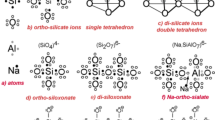Abstract
Pelletization is a worldwide process used in producing artificial aggregates although its usage is not common in Turkey. In this study, lightweight aggregates (LWAs) were manufactured through cold-bonding pelletization of ground granulated blast furnace slag (G) and two types of fly ash with different finenesses (Fly ash A and B). Ordinary Portland cement (PC) was used as a binder at varying amounts from 5 to 20 % by weight. A total of 20 cold-bonded lightweight aggregates were produced at room temperature with different combinations of PC, FA and/or G. The hardened aggregates were tested for specific gravity, water absorption, and crushing strength. Thereafter, lightweight concretes (LWCs) were produced with water to cement ratio of 0.50 and a cement content of 400 kg/m3 by using such lightweight aggregates. The hardened concretes were tested for compressive strength at 28 and 56 days to explore the effect of aggregate types on the compressive strength development. Test results revealed that the amount of cement content had a significant effect on the strength of LWAs which in turn governed the variation in compressive strength of the LWCs. The highest 28 and 56-day compressive strengths of 43 and 51 MPa, respectively were achieved for the concretes including LWAs produced from the blend of 40 % slag, 40 % FA-A and 20 % PC.













Similar content being viewed by others
References
Arslan H, Baykal G (2006) Utilization of fly ash engineering pellet aggregates. Environ Geol 50:761–770
Baykal G, Döven AG (2000) Utilization of fly ash as pelletization process; theory, application, areas and research results. Resour Conserv Recycl 30:59–77
Bilgen G, Kavak A, Yıldırım ST, Çapar OF (2010) Blast furnace slag and its importance in the construction sectors. The Second National Solid Waste Management Conference Mersin
Dongxu L, Zhongzi X, Zhimin L, Zhihua P, Lin C (2002) The activation and hydration of glassy cementitious materials. Cem Concr Res 32:1145–1152
Döven AG (1998) Lightweight fly ash aggregate production using cold bonding agglomeration process. PhD thesis, Boğaziçi University, İstanbul
Gesoğlu M (2004) Effects of lightweight aggregate properties on mechanical, fracture, and physical behavior of lightweight concretes. PhD thesis, Boğaziçi University, İstanbul
Gesoğlu M, Özturan T, Güneyisi E (2007) Effects of fly ash properties on characteristics of cold-bonded fly ash lightweight aggregates. Constr Build Mater 21:1869–1878
Joseph G, Ramamurthy K (2009) Influence of fly ash on strength and sorption characteristics of cold-bonded fly ash aggregate concrete. Constr Build Mater 23:1862–1870
Kayali O (2008) Fly ash lightweight aggregates in high performance concrete. Constr Build Mater 22:2393–2399
Ke Y, Beaucour AL, Ortola S, Dumontet H, Cabrillac R (2009) Influence of volume fraction and characteristics of lightweight aggregates on the mechanical properties of concrete. Constr Build Mater 23:2821–2828
Lo TY, Tang WC, Cui HZ (2007) The effects of aggregate properties on lightweight concrete. Build Environ 42:3025–3029
Manikandan R, Ramamurthy K (2007) Influence of fineness of fly ash on the aggregate pelletization process. Cem Concr Comp 29:456–464
Metha K (1998) Role of the pozzolanic and cementitious material in sustainable development of the concrete industry. Sixth CANMET/ACI International Conference on Fly Ash, Silica Fume, Slag and Natural Pozzolans in Concrete, vol 1, May 31–June 5, Bangkok, Thailand, SP178, pp 1–20
Methods for determination of aggregate crushing value (ACV) (1990). BS 812 part 110
Ramamurthy K, Harikrishnan KI (2006) Influence of binders on properties of sintered fly ash aggregate. Cem Concr Comp 28:33–38
Standard Test Methods for Laboratory Determination of Water (Moisture) Content of Soil and Rock by Mass (1998) Annual Book of ASTM Standards. ASTM D2216-10
Standard test method for specific gravity and absorption of coarse aggregate (2007) Annual Book of ASTM Standards. ASTM C 127
Standard test method for compressive strength of cylindrical concrete specimens (2010) Annual Book of ASTM Standards. ASTM C 39
Topçu IB, Uygunoğlu T (2007) Properties of autoclaved lightweight aggregate concrete. Build Environ 42:4108–4116
Torres ML, Garcia-Ruiz PA (2009) Lightweight pozzolanic materials used in mortars: evaluation of their influence on density, mechanical strength and water absorption. Cem Concr Comp 31:114–119
Turkish Statistical Institute (2010) Press Release 8. http://www.turkstat.gov.tr/preHaberBultenleri.do.?id=6171
Videla C, Martinez P (2001) Sustainable concrete with fly ash lightweight aggregates. http://www.rics-foundation.org
Wasserman R, Bentur A (1997) Effect of lightweight fly ash aggregate microstructure on the strength of concretes. Cem Concr Res 27:525–537
Zhang MH, Gjorv OE (1991) Characteristics of lightweight aggregates for high strength concrete. ACI Mater J 88:150–158
Acknowledgments
This research was supported by Scientific Research Project Management Center of Gaziantep University under the Grant number of MF0908.
Author information
Authors and Affiliations
Corresponding author
Rights and permissions
About this article
Cite this article
Gesoğlu, M., Güneyisi, E. & Öz, H.Ö. Properties of lightweight aggregates produced with cold-bonding pelletization of fly ash and ground granulated blast furnace slag. Mater Struct 45, 1535–1546 (2012). https://doi.org/10.1617/s11527-012-9855-9
Received:
Accepted:
Published:
Issue Date:
DOI: https://doi.org/10.1617/s11527-012-9855-9




